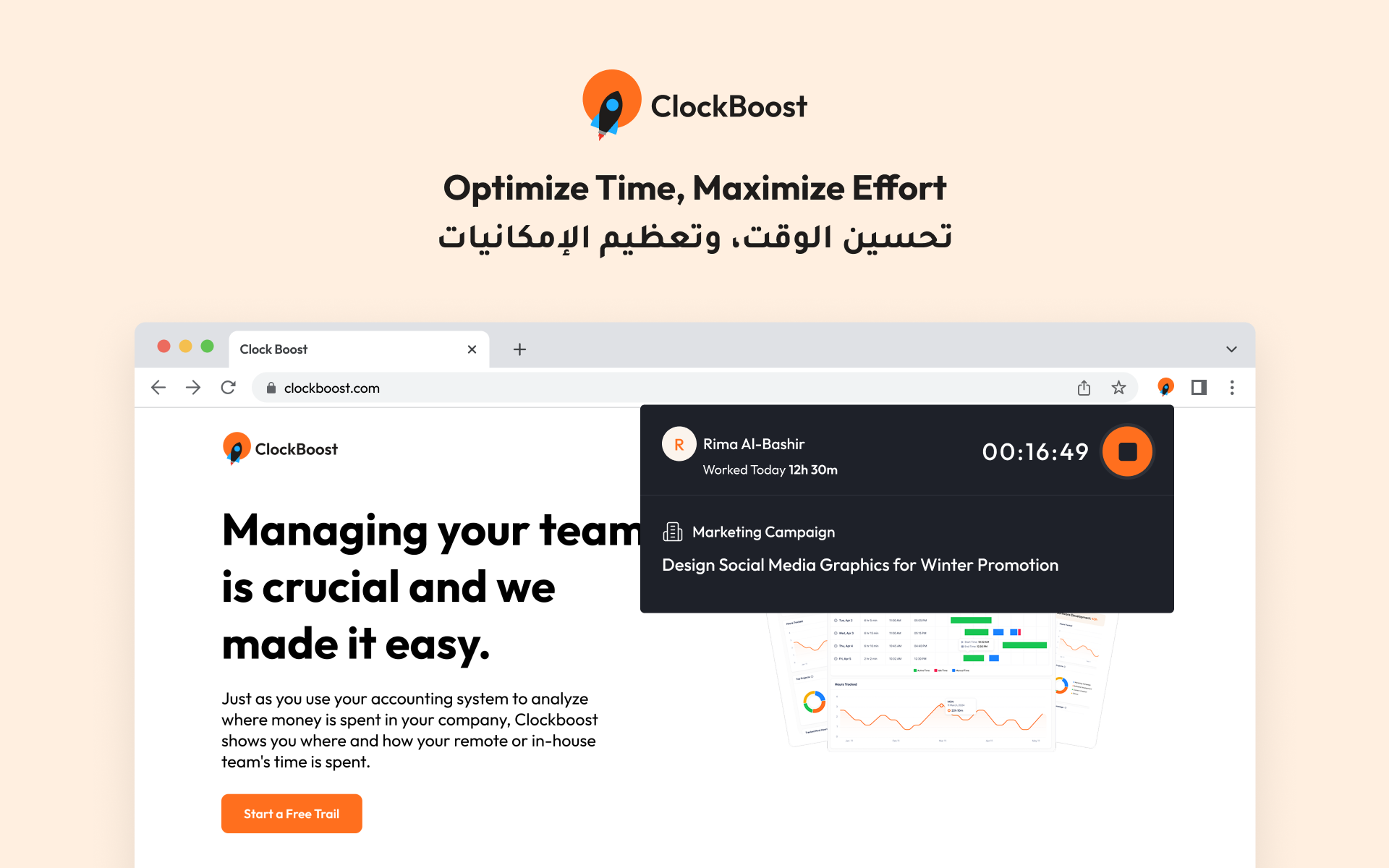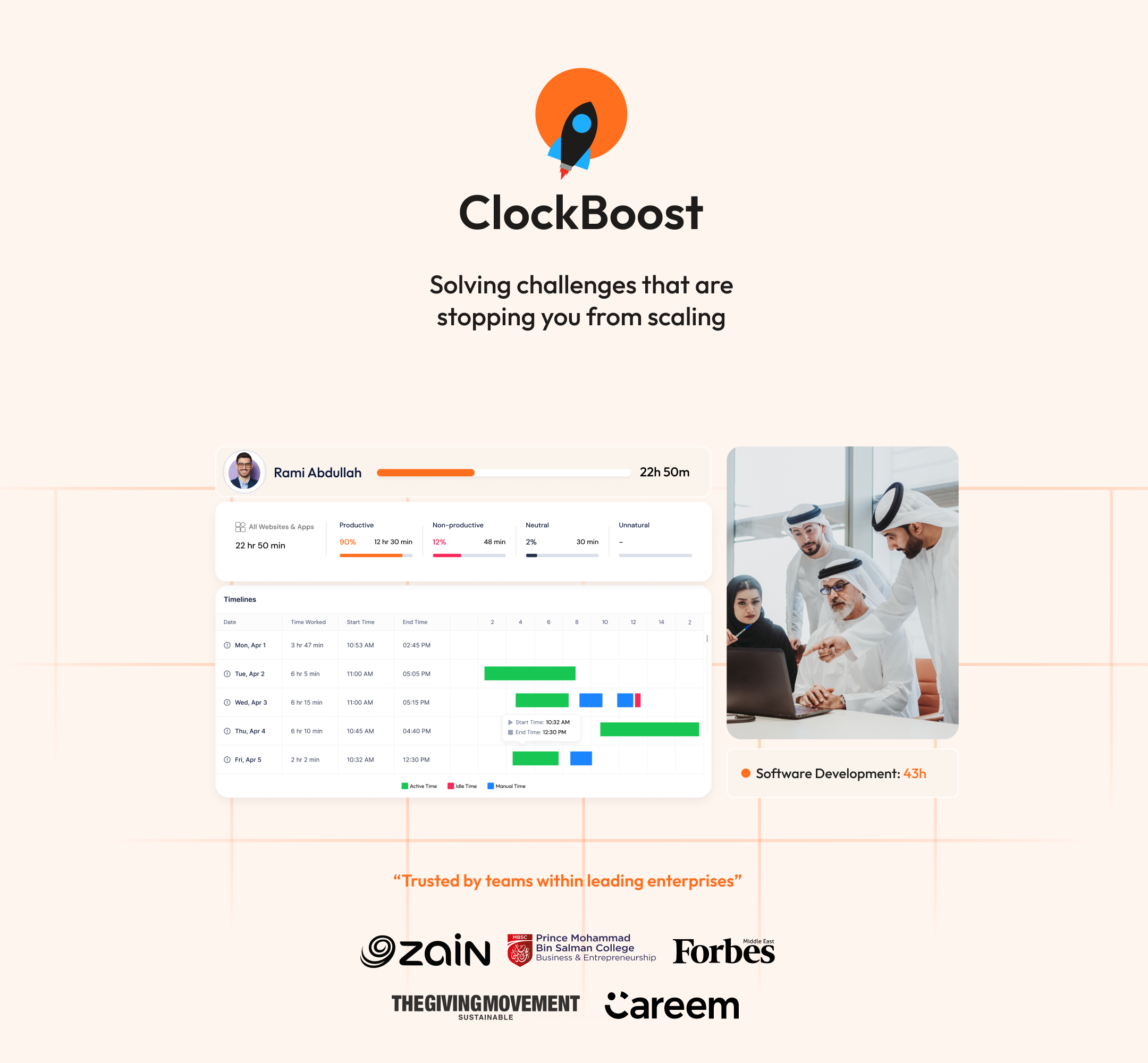
How to Choose the Right Time Tracking Tool for Your Business
In today’s productivity-driven world, choosing the right time tracking tool is a strategic decision that can significantly impact your team’s efficiency. With remote work becoming the norm and hybrid teams on the rise, knowing how to select time tracking software that aligns with your business goals is crucial. The right tool helps streamline operations, optimize time management, and increase transparency across projects.
This guide will help you navigate the decision-making process and find a time management solution that delivers real results. Whether you're managing remote teams, hybrid teams, or in-house staff, selecting the right tool is key to driving productivity and reducing operational overhead.
Why Choosing the Right Time Tracking Tool Matters
Time is one of your business’s most valuable assets and one you can’t replenish. The right time tracking tool does more than just monitor hours. It helps:
- Optimize workflows
- Manage remote or hybrid teams
- Enhance accountability
- Reduce administrative burdens
By having better visibility into how your team spends time, you can make smarter decisions about project planning, hiring, and resource allocation.
Additionally, in fast-paced environments like tech startups or marketing agencies in the Gulf region, tracking time isn’t just about productivity; it’s about maintaining client trust. Accurate logs of billable hours prevent disputes and foster long-term relationships.
Key Factors to Consider When Choosing a Time Tracking Tool
Not all time tracking solutions are created equal. To ensure you select a tool that genuinely supports your team's needs, consider these core features:
1. Ease of Use
If the tool isn't intuitive, your team won’t use it consistently. Look for a clean interface, simple navigation, and a user-friendly experience that minimizes onboarding time. For example, companies in Dubai with diverse multicultural teams often need tools that are language-friendly and simple to adopt across different roles.
2. Seamless Integrations
Time tracking shouldn’t disrupt your workflow. The best tools integrate with the platforms your team already uses, such as Slack, Trello, Asana, Google Calendar, Jira, and GitHub. This allows for real-time updates and automatic time capture linked to specific tasks or projects, saving managers hours of manual entry.
3. Reporting & Analytics
Choose a solution that offers robust reporting features. Your team should be able to:
- Analyze productivity patterns
- Track billable hours
- Understand how time is distributed across projects
Customizable reports help managers identify bottlenecks and optimize workloads. In larger enterprises, this data can also feed into HR and finance systems for better budgeting and payroll management.
4. Support for Remote and Hybrid Teams
Modern teams are often distributed across time zones. Your tool should support asynchronous work, allowing team members to log hours flexibly while maintaining transparency for project managers.
For example, a Riyadh-based development team collaborating with partners in Europe needs a system that accounts for different work hours without micromanagement.
5. Privacy and Trust
A common concern with time tracking is the potential for employee surveillance. Look for solutions that prioritize privacy, offering role-based settings and optional screenshots that promote transparency without micromanagement. Respect for employee autonomy is key, especially in GCC cultures where trust-building is essential.
6. Smart Features
Advanced tools include AI-powered insights, automated reminders, and idle time detection. These features help your team stay focused and minimize time leaks. For example, AI-based prompts can suggest when to take breaks or flag unproductive time, fostering healthier work habits.
7. Free Trial and Support
A free trial is essential. Test the tool with your actual workflow before committing. Make sure customer support is responsive and provides live chat, email, or phone options. For companies in the Gulf region, support availability during local business hours is a plus.
Common Mistakes to Avoid When Choosing a Time Tracking Tool
Selecting the wrong tool can create more problems than it solves. Avoid these common pitfalls:
- Overcomplicating Your Tech Stack: Don’t add tools that create friction or require extensive training.
- Ignoring Privacy: Avoid invasive monitoring tools that can harm employee morale.
- Skipping the Trial Phase: Always run a test period with your actual team and workflow.
- Choosing Based on Price Alone: While cost is important, it shouldn’t be the only factor. Look for overall value.
A Practical Time Tracking Comparison Checklist
Use this checklist to compare options and ensure you select the right tool:
Ease of Use
- Is the platform intuitive and user-friendly?
- Does it require minimal training?
Remote Team Support
- Can it handle distributed teams across different time zones?
- Does it support asynchronous collaboration?
Reporting Capabilities
- Are reports customizable and actionable?
- Can you track productivity, billable hours, and time logs effectively?
Integrations
- Does it integrate with your current project management tools?
Smart Features
- Are there AI-powered suggestions or automated reminders?
- Does it support task tracking, goal setting, and idle time detection?
Trial and Support
- Is there a risk-free trial available?
- Is customer support responsive and helpful?
Final Thoughts: Make Time Tracking Work for You
Choosing the best time tracking tool is about balancing simplicity with functionality. The right platform will help your team stay productive, ensure accountability, and give managers the insights they need to make data-driven decisions.
By focusing on usability, integrations, reporting, and respect for privacy, you can select a solution that supports long-term growth and team satisfaction. Whether you're scaling a startup in Dubai, managing freelancers in Jeddah, or streamlining operations in Abu Dhabi, the right time tracking software can improve efficiency and empower your team to do their best work.
Additional Resources:


























.png)

